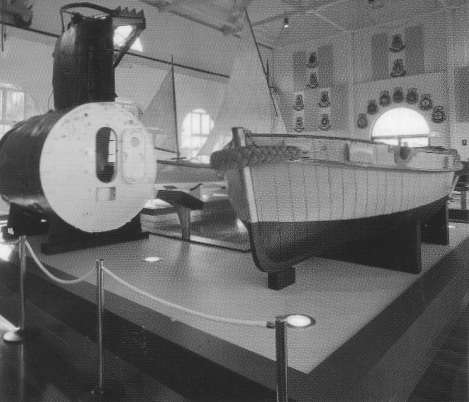- Author
- Periodical, Semaphore
- Subjects
- History - general, Biographies and personal histories, Ship histories and stories
- Tags
-
- RAN Ships
- None noted.
- Publication
- September 2007 edition of the Naval Historical Review (all rights reserved)
This article was first published in Semaphore, the newsletter of the Sea Power Centre – Australia, Issue 20, November 2006. The Naval Historical Society is grateful for their permission to use their work.
The Royal Australian Navy (RAN) is justly proud of its history, particularly the notable individuals, actions and ships that are well known to most: Glossop and HMAS Sydney (I) and the Emden, Stoker and HMAS AE2 in the Dardanelles, Waller and HMAS Perth (I) in the Sunda Strait, and Teddy Sheehan’s courage protecting his shipmates in HMAS Armidale (I). These names echo through time: however heritage is more than significant individuals, events and developments. The cook in Sydney, a torpedo rating in AE2, the writer in Perth, and the stoker in Armidale, also have their stories, which are just as important to the heritage of the RAN. The RAN’s heritage represents a physical link with what it has meant, and what it does mean to serve in the RAN.
In over a century of service, the RAN has collected a large range of artifacts, relics and items that speak of duty, service and a unique lifestyle as well as battles and wars. Through the medium of collected artifacts and the stories associated with them the RAN’s heritage is nurtured, protected and preserved for future generations.
The Naval Heritage Collection
The Naval Heritage Collection (NHC) has existed in one form or another since the late 1970s. Previously the RAN’s artifacts were managed more as obsolete store items. In the period from the end of World War I up to the 1970s, the RAN looked to others to preserve its heritage. In the 1930s and 1950s ownership of large numbers of RAN artifacts were transferred to institutions such as the Australian War Memorial. Many significant artifacts were also lost, destroyed, stolen or simply deteriorated due to the effects of time and lack of preservation.

a midget submarine conning tower and a Sydney Harbour boom boat
(Image: RAN)
The initial aim of the NHC was to manage the heritage artifacts still held by the RAN and to provide a storage location at Spectacle Island, Sydney Harbour, in which to concentrate the Collection as a protective measure. A lack of resources and curatorial expertise posed significant problems in the early years of the NHC. That NHC was only responsible for Spectacle Island artifacts while artifacts held by ships and establishments elsewhere were the responsibility of individual commanding officers, proved to be a further structural weakness for management of the Collection.
By the late 1990s it was apparent that the rationale for and the way in which heritage management occurred in the RAN was ineffective by almost any heritage industry measure. By then the NHC had even been excised from the RAN, having been transferred to the Corporate Support and Infrastructure Group under the 1997 Defence Reform Program. In 2001, the Chief of Navy (CN) directed that a review examine all aspects of RAN heritage management and make recommendations for the Collection’s long-term future.
A driving factor for the review was proposed amendments to the Protection of Movable Cultural Heritage Act 1986 and the Environmental Protection and Biodiversity Conservation Act 1999 which would require Commonwealth departments and agencies to conserve and exhibit the Australian heritage they hold. The Acts were amended in 2003 and included heavy financial and criminal penalties for organisations and senior managers should heritage items not be managed appropriately.
In February 2003 CN endorsed the 24 recommendations made by the Naval Heritage Management Study (NHMS). This Study was based on the concept that heritage supported the RAN’s goals of internal ethos, recruiting, retention and public reputation, in addition to the RAN’s moral and legislated obligation to preserve national heritage. The Study concluded that this heritage supports RAN capability. Significant outcomes included: the RAN `owning’ and being responsible for its heritage; return of the NHC to RAN control within Navy Systems Command; a centrally managed and controlled single Collection; the appointment of a Director NHC at Commander level; retention of Spectacle Island as the NHC HQ and Main Repository; implementation of modern `best practice’ curatorial and museum management processes; and development of a facility to exhibit the Collection – the RAN Heritage Centre (RANHC).




